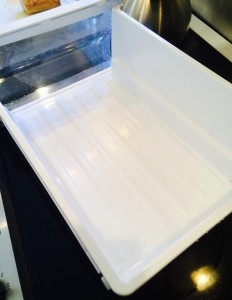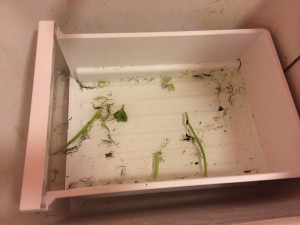On Winter Cleansing
We are barely into the New Year, and already I’ve heard people talking about cleanses and detoxes and other extreme eating regimes they are planning for January or February, so I’m just going to come right out and say this:
Winter is not the time to do something as severe and shocking to your body as a dietary cleanse or detox.
Here in the Northern Hemisphere it is dark and cold in January and February. Now is the time to protect your body from the onslaught of frigid temperatures and restricted sunlight with rest and nourishment: think warming stews and soups, bright winter salads, a bit of locally made cheese and lots of fresh fruit and greens. If you really want to give something up, think about sugar and alcohol. Just to be clear, I don’t think it is ever a good time to follow an extreme dietary plan — eating sensibly all year long seems like a better idea — but if cleansing is something you feel you need to do, then I would do it in late spring. Why spring? Well to begin with, that is when nature does it’s cleansing — think of spring rains and water rushing through leaf-clogged streams working with windy days to clean out winter detritus from tributaries, meadows and woodland. We are of the earth, and it makes sense to keep in step with nature’s rhythm. Secondly, come spring, there are usually plenty of early-season vegetables available, making cleansing a pleasure rather than a penance. In my book, eating should always be a pleasure.
Of course, there is a type of January detox program that I love: The All-Important, Year-End, Cleansing of the Vegetable-Bin! Maybe your vegetable bin is tidy and organized at this time of year, with all the veggies beautifully color sorted by sell-by date. I hope so. Mine was a complete disaster. After the double-feature horror show that is Thanksgiving and Christmas, I didn’t even know what was lurking in that lowly drawer at the bottom of the fridge. Was it slime from the black lagoon or just old parsley? Here is what I rescued today when I cleaned out the bin:
- Some beautiful but now slightly bendy carrots
- Parsnips that had gone a bit spongy (I love them, but not everyone else does, so I never make as many as I buy)
- Relatively fresh Mustard Greens
- A colorful variety of turnips (from Farmer Jess at Chickadee Creek Farm)
- Lots of celery (Did I buy double for the turkey stuffing?)
- A leek going a bit yellow at the top
- 2 onions
- A lightly bruised bulb of fennel
These former denizens of the vegetable bin spent this evening in a gigantic pot making what my family fondly refers to as Bottom of the Bin Soup. I sautéed the leek and onions with a bit of butter and olive oil and then added the remaining vegetables (roughly chopped), and let them ‘sweat’ — that is to say cook over a low heat but not get brown or sauté. Finally I added the last of the stock I had made from Thanksgiving’s turkey (yes, I’m cleaning out the freezer, too), some water and brought it all to a boil, then reduced the heat and let it simmer. After about 30 minutes of cooking, I pureed half of the soup with my nifty immersion blender; this gadget is neat, because you just stick it into the soup and swirl it around for a few minutes until the desired consistency has been reached. I threw in a handful of barley (lentils, chickpeas, beans, rice or faro would have been just as nice) and let it simmer again at a very low heat. The barley was cooked in an additional 30-40 minutes, giving a nice nubbliness to the potage. The result was humble and delicious. Perfect for deep mid-winter.




Comments are closed.